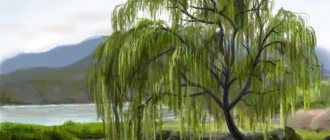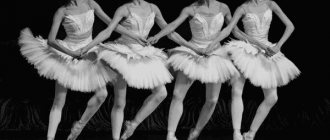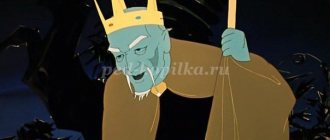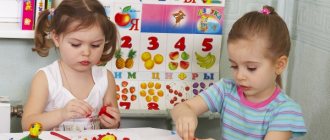Summary of a game educational situation with elements of cognitive development
Municipal budgetary preschool educational institution
kindergarten No. 4
municipal formation Kanevsky district
Abstract
integrated activities in the educational field
"Social and communicative development"
on the topic:
“Visiting Aunt Cossack”
prepared by: teacher Klimenko N.I.
2017
Software tasks:
1. To instill in children a love for their small homeland - Kuban. 2. Expand children’s understanding of everyday life, the way of life of the Kuban Cossacks, continue to introduce them to the world of objects used in everyday life in the old days. Learn to name their functions and purpose.
3. Develop an educational interest in the history of your people.
Integration with educational areas:
“Social and communicative development”, “Artistic and aesthetic development”, “Physical development”, “Speech development”.
Objectives of educational areas:
1. Enrich children’s vocabulary with words: rocker, cast iron, grip, towel, way of life, wisdom, prevarication, gift.
2. Activate the words in children’s speech: generosity, frugality, hard work, accuracy, observation, politeness, hospitality, courage, honesty, kindness, respect, friendliness, love of freedom, independence, pride; 3. Through health-saving technologies, strengthen the physical health of children, form moral and volitional qualities, introduce children to the Kuban outdoor games played by little Cossacks, and evoke a desire to take part in them; 4. Develop an interest in the origins of folk art, instill an interest in making amulets, ritual and game dolls; 5. To introduce to the art of music, to cultivate a love for the musical culture of the Cossacks, to convey to children the beauty of the Cossack song.
Preliminary work
: organized educational activities in a mini-museum, doll making.
Methodical techniques:
verbal methods (teacher's story, questions to children, explanation); visual methods (demonstration of illustrations, video material), practical method.
Equipment:
— mini-museum “Kuban Compound”
- installation of multimedia,
—
audio recording of Kuban lyrical songs,
- costumes for children and teachers (sundresses, shirts) according to the number of participants,
—
To make a doll you will need :
1) identical squares of white and black fabric, 1 piece of each color, approximately 12x12 cm in size. (As an option, you can choose light blue and dark blue, soft purple and dark purple, etc.) .
2) small pieces of cotton wool,
3) red thread,
4) braid or cord for hanging the doll.
Progress of the lesson:
1. Organizational moment.
Educator:
Guys, Aunt Cossack invites us to visit today.
Cossack woman
: (multimedia, video recording. Teacher in a Cossack costume):
The further into the future we go,
The more we value the past.
And we find beauty in the old,
At least we belong to something new
I invite you to my Kuban courtyard, stay, help, and continue our work on making the doll. Our magic ball will show you the way.
Educator:
Here is the ball. Children, do we accept the invitation?
Children:
(Children's response)
Educator:
You roll, roll, ball, from the ravine to the bridge.
Just don’t rush too much, show the path. (The ball rolls, and the children follow it. They end up in the Kuban courtyard.)
2. The main part.
Cossack woman:
Hello, dear guests: beautiful girls and kind fellows!!! I'm glad to see you in my yard. Children:
We came to you with a request - to teach us how to make a talisman for the home.
Cossack girl.
I’ll teach you, but first I want to know what you know about Kuban. You already know a lot about the life and traditions of Kuban. You know a lot of new words. Let's remember them. I will describe the object to you, and you will have to tell me it.
-The house where our ancestors lived (hut)
-This is a clay object in which milk does not sour for a long time (glachik)
-With the help of these two wooden objects, the clothes of the Cossacks were always ironed (ruble and gurney)
-What did you knead the dough in? (in makitra)
-Water was brought from ....(well)
-We drank delicious tea from…..(samovar)
-They cooked delicious porridge in this item and was it very heavy? (cast iron)
— To put the cast iron into a hot oven or take it out of the oven, what did you use? (Grip)
-And with the help of this item and bread they greet guests (rushnik)
- Today we will get acquainted with a new item in the house.
The grandmother hides her things there—boots, a caftan, a frock coat. . . Tell me everything together, This closet is called ... (chest)
Cossack woman:
Guys, this is a chest
(there is a chest in the corner of the hut, the children approach it).
Look, the chest is locked with a key. This is a chest, this is a chest, a marvel—a marvelous thing, probably, in such chests the only thing to be stored is the countless treasures that are awarded to heroes in fairy tales for their daring and honesty.
Guys, how many of you know what kind of item a chest is and what it is needed for? (children's statements)
Search situation “What could be in the chest?”
Cossack woman:
Our grandmothers kept their outfits and jewelry in chests.
What do you think is stored in this chest? ( children's statements).
Cossack woman:
You and I will play a game
Game situation
: “Pick up and try on suits.” The teacher invites the children to try on Kuban costumes.
The teacher takes clothes for children from the chest one by one: sundresses for girls, shirts for boys. (Children wear Kuban costumes)
a game
Then he takes out the basket
Cossack woman:
Here is our basket of scraps. Now you know that I keep material for our crafts in the chest. Sit down on the bench, we will spin the doll - a talisman.
3. Practical work.
Step-by-step production of a doll-amulet "
Day-night
»
Cossack:
Remember, such a doll needs to be made without scissors and a needle; in the old days it was called “roll” or “twist”. You and I played with dolls. Which ones?
Children. "Pelenashka." "Bell".
Cossack woman:
And today we will make a doll amulet “Day - Night”.
(Form of working together - individual, according to the scheme)
During independent work, Kuban lyrical songs are heard.
Explanation during operation:
“Day and Night” dolls are dolls that protect the home. Dolls protect the change of day and night and order in the world. During the day they put the light one forward, and at night - the dark one. The “Day” doll is young, lively, active, hard-working and cheerful. She is the mistress of the day and makes sure that on weekdays people work, labor, on holidays they have fun, sing, dance, play, so that the sun shines during the day. The doll monitors the lives of people in the light of day, protects the day. So that the day is not wasted, but meaningfully. Then the doll is happy, and everything is fine with the people. The “Night” doll is wise, thoughtful, calm, she is the mistress of the night. The night is a magician. It changes both things and people. She brings another world. Everything is mysterious at night. Everything familiar without sunlight becomes unrecognizable. And people become different. More frank and open. The most heartfelt conversations drag on past midnight. But the main thing is that people sleep at night. The night makes sure that everyone calms down and goes to bed, rests from daytime activities, and gains strength.
4. Analysis and evaluation of the lesson.
Cossack woman:
Well done, what beautiful amulets you have created!
Let's give each other dolls with words of wishes. Let us remember why these dolls were made, what should be desired when giving a doll. ( Health, happiness, prosperity, goodness
.) The doll must be given from the heart, only then will it bring good luck and become a real amulet.
Educator:
I want to give my doll to Arisha. Arisha, I’m giving you a talisman doll so that it can protect your home in Ukraine.
Children give each other dolls with sincere wishes.
APPLICATION:
rice. 1 pic. 2
Place cotton wool in the middle of the squares (Fig. 1). Carefully form the head and tie with red thread (Fig. 2).
rice. 3 fig. 4
Shape the body of the dolls in the same way as the base is made (Fig. 3). Place the resulting pupae together, back to back (Fig. 4).
rice. 5 fig. 6
Wrap red thread in the places where the fabric is wrapped (Fig. 5). Tie a braid or cord to the neck, and you can hang the doll in any convenient place (Fig. 6).





